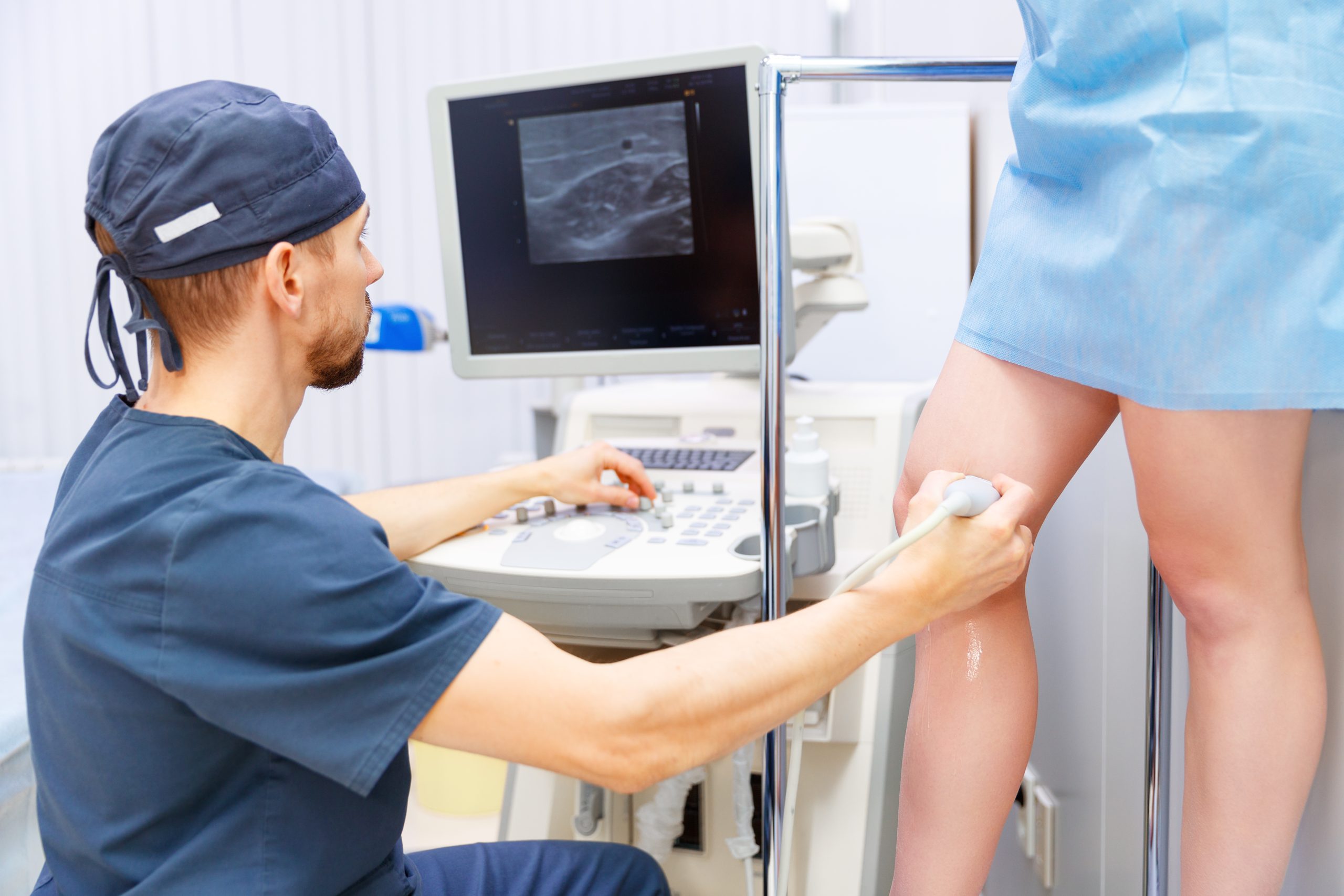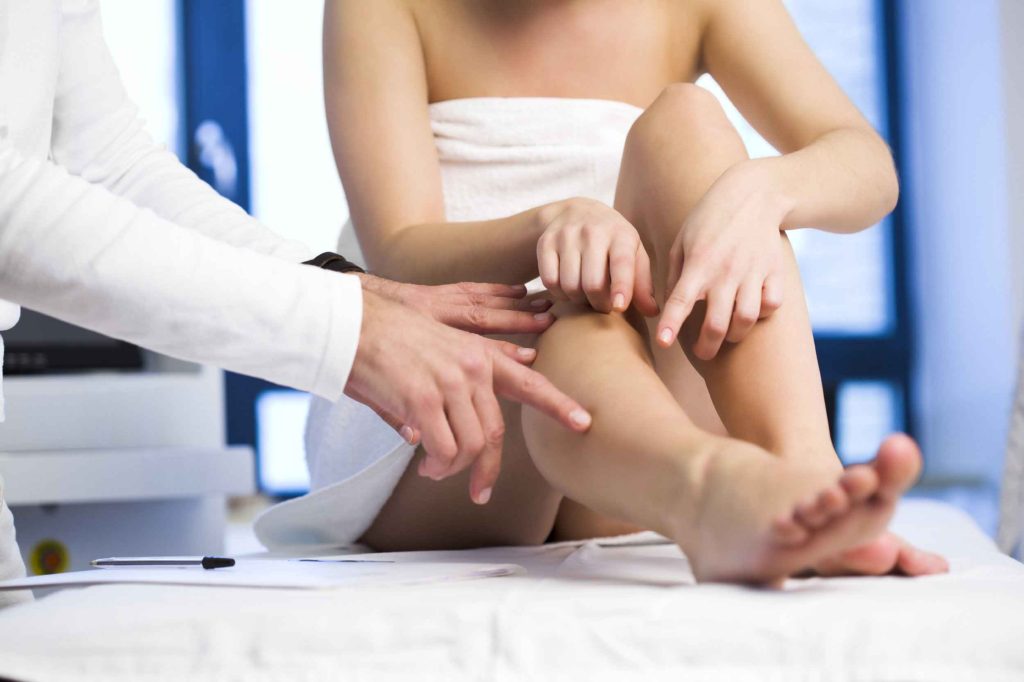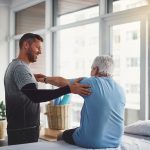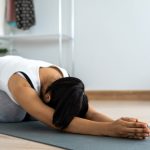Natural Treatments That May Help Reduce the Appearance and Discomfort
Varicose veins are enlarged, twisted veins that are usually bluish purple. It is a common condition, affecting approximately 23% of adults in the United States.1
While there is no cure for varicose veins, home remedies may help reduce symptoms of the condition. They include self-care measures such as exercise, weight loss, wearing compression stockings, and more.
This article discusses how home remedies may help reduce the appearance and discomfort of varicose veins, as well as their limitations.

Can Varicose Veins Be Treated at Home?
So far, scientific support for the claim that any remedy can treat varicose veins is fairly lacking.
While home remedies can help you manage symptoms of varicose veins, you cannot fix varicose veins on your own. Medical intervention is required.
That said, if you have varicose veins that worsen or do not improve with self-care, there are effective treatments available that help you get rid of them. They include:2
- Sclerotherapy: This procedure involves injecting salt water or a chemical solution into the vein, which causes it to harden and disappear.
- Ligation and vein stripping: This is a surgical procedure used to remove severely damaged veins.
- Laser therapy: This treatment uses heat from a laser to shrink small, superficial varicose veins.
Home Remedies for Varicose Veins
Oftentimes, varicose veins can be managed using simple self-care practices. The following are some natural methods you can try at home to help reduce symptoms of varicose veins.
EXERCISES FOR THE ANKLE JOINT. SET №5 IS AIMED AT STRETCHING THE MUSCLES (IMPROVEMENT OF FLEXIBILITY OF THE MUSCULAR APPARATUS) AND INCREASE OF THE RANGE OF JOINT MOVEMENT
For additional information about the recovery process after an ankle fracture, you can watch a video demonstrating exercises and rehabilitation recommendations.
Exercise
Daily foot and ankle exercises may help reduce symptoms of varicose veins. Exercises that activate the calf muscles, such as walking or lifting the heels off the floor to stand on the toes, can help move venous blood from the legs back to the heart.3
Compression Stockings
Compression stockings can be worn to help keep blood from pooling in the lower legs. They work by applying the greatest amount of pressure at the foot or ankle and gradually decrease in pressure up the leg.
They are available in different styles and with varying degrees of compression. You can get compression stockings at your local pharmacy or medical supply store, though some types of stockings may require a prescription.3
Wear Loose Clothing
Avoid wearing tight clothing, particularly items that constrict the waist, groin (upper thigh area), and the legs. This can restrict venous blood flow from the legs back to the heart—which may worsen varicose veins.4
EXERCISES FOR THE ANKLE JOINT. SET №6D IS AIMED AT STRENGTHENING OF THE MUSCLES AND IMPROVEMENT OF PROPRIOCEPTION AND STABILITY OF THE ANKLE AND ENTIRE LOWER LIMB. INITIAL STAGE
Elevating Legs
Elevating the legs above the heart for 15 minutes three or four times per day can reduce swelling and help relieve other symptoms associated with varicose veins.
Try taking breaks throughout the day to elevate your legs. When doing so, keep your legs above the level of your heart; sitting with your legs propped on a stool will not improve venous drainage from the legs.3
Eat More Flavonoids
Flavonoids are natural compounds found in fruits, vegetables, grains, bark, roots, and more.5 Some research suggests that flavonoids may help reduce varicose vein pathophysiology (physiological processes associated with disease) and improve venous tone.6 Eating a diet rich in flavonoids may have a therapeutic effect for those with varicose veins.
What Is Good To Drink for Varicose Veins?
Some studies suggest that certain food ingredients can help improve blood circulation, which may have a positive impact on varicose veins. Beverages that have been linked to improved cardiovascular health include pomegranate juice, tea (green or black), and beetroot juice.7 However, more research is needed to confirm this.
EXERCISES FOR THE ANKLE JOINT. SET №6E IS AIMED AT STRENGTHENING OF THE MUSCLES AND IMPROVEMENT OF PROPRIOCEPTION AND STABILITY OF THE ANKLE AND ENTIRE LOWER LIMB. MID STAGE
Reach Ideal Weight
Having excess weight may put you at higher risk of developing varicose veins.8 Research suggests weight loss may improve symptoms in people with obesity. Although it won’t cure existing varicose veins, it may help stop them from getting worse and can potentially prevent new ones from forming.9
Reflexology
Reflexology is a form of bodywork that focuses primarily on the feet. One small study compared reflexology with rest in 55 pregnant women. Reflexology significantly reduced leg swelling.
Pregnant women should consult their healthcare provider before having reflexology. Some sources say that reflexology should not be done during the first trimester.
Herbal Remedies
Studies suggest that herbal remedies may help reduce certain symptoms associated with varicose veins.
Horse Chestnut Extract
The herb horse chestnut (Aesculus hippocastanum) is one of the most widely used alternative medicine remedies for varicose veins and chronic venous insufficiency (a related condition). The active constituent in horse chestnut is a compound called aescin, which may help reduce leg pain and swelling when applied topically.10
Grape Seed and Pine Bark Extracts
Grape seed extract (Vitis vinifera) and pine bark extract (Pinus maritima) both contain oligomeric proanthocyanidin complexes (OPCs), antioxidants that appear to strengthen the connective tissue structure of blood vessels and reduce inflammation.11 Preliminary studies suggest that OPCs can help people with varicose veins.10
Butcher’s Broom
Butcher’s broom (Ruscus aculeatus), also known as box holly or knee holly, is an herb used to support vein health. It contains compounds called ruscogenins, which are thought to strengthen collagen in blood vessel walls and improve circulation.10
EXERCISES FOR THE ANKLE JOINT. SET №6F IS AIMED AT STRENGTHENING OF THE MUSCLES AND IMPROVEMENT OF PROPRIOCEPTION AND STABILITY OF THE ANKLE AND ENTIRE LOWER LIMB. ADVANCED STAGE
Are Supplements for Varicose Veins Safe?
Supplements haven’t been tested for safety and keep in mind that the safety of supplements in pregnant women, nursing mothers, children, and those with medical conditions or who are taking medications has not been established.
If you’re considering the use of any remedy or alternative medicine for varicose veins, talk with your primary care provider first.
Apple Cider Vinegar
Apple cider vinegar contains antioxidant properties, which may improve blood flow and blood circulation. The results of one randomized controlled trial published in 2016 in Evidence-Based Complementary and Alternative Medicine suggested that topical application of apple cider vinegar had a positive effect on varicose vein symptoms—particularly when combined with other conservative treatments. Patients reported less pain, swelling, and itching.12
Although apple cider vinegar cannot remove varicose veins, limited research suggests it may have healing properties that can help alleviate symptoms.
Summary
Simple home remedies like wearing compression stockings, elevating your legs, and using certain herbal remedies may help reduce the appearance of varicose veins, as well as improve symptoms. Lifestyle changes such as maintaining a healthy weight, getting regular exercise, and eating a diet rich in fruits and vegetables may also provide some benefits.2
While self-care practices can help you shrink varicose veins and alleviate symptoms, they do not get rid of them. If your varicose veins are becoming bothersome, talk to your healthcare provider about other treatment options.2
Cathy Wong is a nutritionist and wellness expert. Her work is regularly featured in media such as First For Women, Woman’s World, and Natural Health.

Demo versions of GHRS sets of exercises for the Lower Limb Problems and Post-traumatic rehabilitation of gait disorders on YouTube
You can find more information about the Lower Limb Problems and Post-traumatic rehabilitation of gait disorders in our BLOG
Our website presents sets of exercises for rehabilitation of the ankle joint and gait disorders in the following four areas:
-
EXERCISES FOR THE ANKLE JOINT. SET №5 IS AIMED AT STRETCHING THE MUSCLES (IMPROVEMENT OF FLEXIBILITY OF THE MUSCULAR APPARATUS) AND INCREASE OF THE RANGE OF JOINT MOVEMENT
-
EXERCISES FOR THE ANKLE JOINT. SET №6D IS AIMED AT STRENGTHENING OF THE MUSCLES AND IMPROVEMENT OF PROPRIOCEPTION AND STABILITY OF THE ANKLE AND ENTIRE LOWER LIMB. INITIAL STAGE
-
EXERCISES FOR THE ANKLE JOINT. SET №6E IS AIMED AT STRENGTHENING OF THE MUSCLES AND IMPROVEMENT OF PROPRIOCEPTION AND STABILITY OF THE ANKLE AND ENTIRE LOWER LIMB. MID STAGE
-
EXERCISES FOR THE ANKLE JOINT. SET №6F IS AIMED AT STRENGTHENING OF THE MUSCLES AND IMPROVEMENT OF PROPRIOCEPTION AND STABILITY OF THE ANKLE AND ENTIRE LOWER LIMB. ADVANCED STAGE
-
EXERCISES FOR POST-TRAUMATIC CORRECTION AND REHABILITATION OF GAIT. INITIAL STAGE – SET 1
-
EXERCISES FOR POST-TRAUMATIC CORRECTION AND REHABILITATION OF GAIT. MIDDLE STAGE – SET 2
-
EXERCISES FOR POST-TRAUMATIC CORRECTION AND REHABILITATION OF GAIT. ADVANCED STAGE – SET 3
-
EXERCISES FOR POST-TRAUMATIC CORRECTION AND REHABILITATION OF GAIT. VERY ADVANCED STAGE – SET 4



